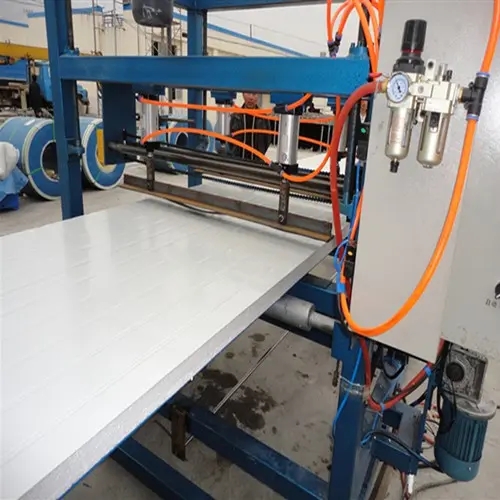
The Evolution and Importance of the Straight Seam Tube Rolling Mill
In the expansive world of metalworking, the straight seam tube rolling mill holds a notable position. This technology is central to the production of steel tubes used in various industries, including construction, automotive, and energy. As the demand for high-quality tubular products continues to rise, understanding the mechanics, benefits, and advancements in straight seam tube rolling mills becomes essential.
Understanding Straight Seam Tube Rolling
A straight seam tube rolling mill is a specialized manufacturing plant designed to produce welded steel tubes. The process begins with flat steel strips that are fed into the mill. As they pass through a series of rollers, the strips are gradually formed into a cylindrical shape. Once the edges meet, they are welded together to create a seamless product. This technique is favored for its efficiency and ability to produce consistent quality.
The major components of a straight seam tube rolling mill include the forming section, welding section, and sizing section. The forming section typically employs a series of rollers that gradually bend the flat steel into a tube shape. The welding section utilizes an electric arc, laser, or high-frequency induction to fuse the tube’s edges, while the sizing section ensures that the final product meets the specified dimensions, typically using mechanical or hydraulic means.
Advantages of Straight Seam Welding
One of the principal advantages of straight seam welded tubes is their strength and structural integrity. The tube’s design allows for efficient distribution of stress, making them ideal for high-pressure applications, such as pipelines and scaffolding. Additionally, the welding process produces fewer defects compared to other manufacturing methods, which contributes to the overall reliability and durability of the finished products.
Straight seam tubes are also trendsetters in terms of versatility. They can be manufactured in various dimensions, allowing for customized solutions to specific industrial needs. Furthermore, the rolling mill process optimizes productivity, enabling manufacturers to produce large quantities of tubes in a relatively short amount of time. This efficiency is crucial in meeting the ever-increasing market demands across different sectors.

Technological Advancements
As industries evolve, so do the technologies associated with straight seam tube rolling mills. Recent advancements include the integration of automation and smart technologies. This shift allows for real-time monitoring of the production process, ensuring higher precision and quality control. Sensors can detect anomalies, adjust settings on the fly, and reduce waste, optimizing resource usage.
Moreover, the development of advanced welding techniques, such as laser welding, has enhanced the capabilities of tube mills. These methods not only increase the speed of production but also improve weld quality, resulting in stronger and more reliable tubes. The combination of advanced materials and techniques is pushing the boundaries of what is possible in tube manufacturing.
Environmental Considerations
In recent years, there has been a growing emphasis on sustainability within the metalworking industry. Manufacturers of straight seam tube rolling mills are increasingly adopting eco-friendly practices, such as recycling scrap metal and reducing energy consumption during production. This shift not only helps mitigate environmental impacts but also enhances the overall efficiency of the manufacturing process.
Conclusion
In summary, straight seam tube rolling mills are a cornerstone of modern manufacturing, providing high-quality tubes essential for various industries. With their structural advantages and manufacturing efficiency, these mills are well-positioned to meet the growing demands of the market. As technology continues to advance, the integration of automation and innovative welding techniques promises to further enhance the capabilities and efficiency of these systems. Additionally, a focus on sustainable practices will help ensure that the industry meets not only the economic needs but also the environmental responsibilities of the future. The evolution of straight seam tube rolling mills reflects the dynamic nature of manufacturing—a blend of traditional methods and modern innovation that will undoubtedly shape the future of metal fabrication.